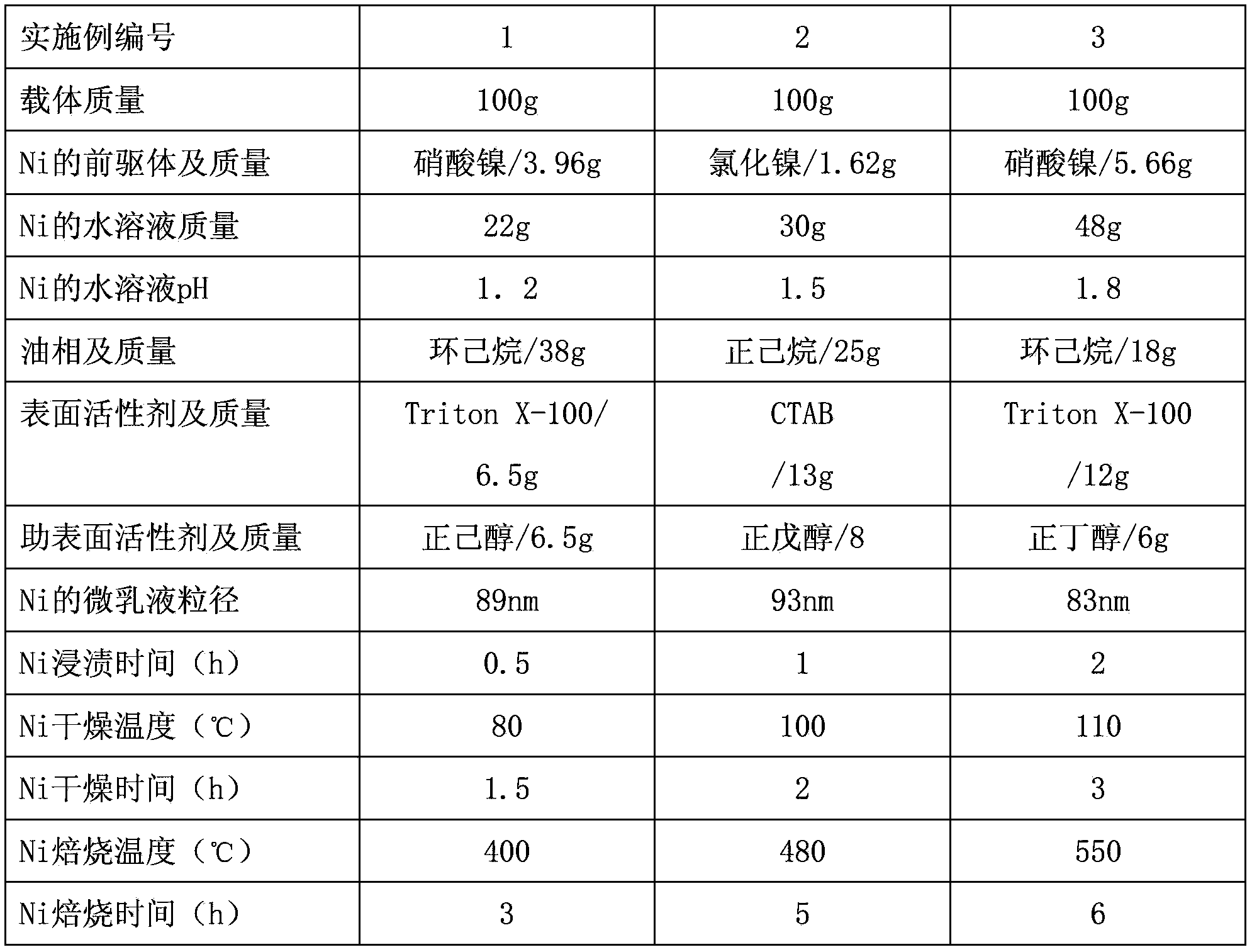C3 fraction selective hydrogenation method
A selective hydrogenation and fractionation technology, which is applied to hydrocarbons, chemical instruments and methods, purification/separation of hydrocarbons, etc., can solve problems such as increasing the difficulty of operation
- Summary
- Abstract
- Description
- Claims
- Application Information
AI Technical Summary
Problems solved by technology
Method used
Image
Examples
Embodiment 1
[0051] A commercially available bimodal pore distribution cylindrical alumina carrier with a diameter of 4 mm and a length of 4 mm was used. After calcination at 1100°C for 4 hours, the bimodal peaks of pore diameters are at 40nm and 100nm respectively, the pore volume is 0.6ml / g, and the specific surface area is 60m 2 / g.
[0052] Its C3 fraction comes from sequential hydrogenation processes such as figure 1 As shown, but the reaction bed of the adiabatic bed reactor is divided into two sections, and the raw material composition is shown in Table 1.
[0053] Table 1 hydrogenation raw material composition
[0054] Hydrogenation feedstock
C 3 h 4 (MA)
C 3 h 4 (PD)
C 3 h 6
C 3 h 8
Content (v / v%)
4.8
3.2
82.0
10.0
[0055] Reaction conditions:
[0056] Two-stage adiabatic bed reactor hydrogenation process, liquid phase raw material volume space velocity: 5h -1 , Operating pressure: 2.5MPa, reactor catalys...
Embodiment 2
[0058] A commercially available bimodal pore distribution spherical alumina carrier with a diameter of 4 mm was used. After calcination at 1050°C for 4 hours, the bimodal peaks of pore diameters are at 20nm and 150nm respectively, the pore volume is 0.4ml / g, and the specific surface area is 70m 2 / g.
[0059] use figure 1 The technological process shown, its C3 fraction raw material composition is as shown in Table 2.
[0060] Table 2 hydrogenation raw material composition
[0061] Hydrogenation feedstock
[0062] Single-stage reactor hydrogenation process, liquid phase raw material volume space velocity: 50h -1 , Operating pressure: 3.5MPa, reactor catalyst loading: 300ml, hydrogen / (MA+PD) (mol)=5:1, reactor inlet temperature 25°C. The reaction results after 1000 hours of assessment are shown in Table 5.
Embodiment 3
[0064] A commercially available bimodal pore distribution four-leaf clover-shaped alumina carrier was used, with a diameter of 5.5 mm and a length of 4 mm. After calcination at 1000°C for 4 hours, the bimodal peaks of pore diameters are 30nm and 200nm respectively, the pore volume is 0.5ml / g, and the specific surface area is 80m 2 / g.
[0065] use figure 2 The technological process shown, its C3 fraction raw material composition is as shown in Table 5.
[0066] Table 3 hydrogenation raw material composition
[0067] Hydrogenation feedstock
C 3 h 4 (MA)
C 3 h 4 (PD)
C 3 h 6
C 3 h 8
Content (mol%)
0.1
0.1
85.0
14.80
[0068] Reaction process conditions: single-stage adiabatic bed reactor process, material space velocity: 100h -1 , Operating pressure: 3.0MPa, catalyst loading: 200ml. Hydrogen / (MA+PD)(mol)=1:1. The reaction results after 600 hours of assessment are shown in Table 6.
[0069] Embodiment ...
PUM
| Property | Measurement | Unit |
|---|---|---|
| Particle size | aaaaa | aaaaa |
Abstract
Description
Claims
Application Information
 Login to View More
Login to View More - R&D
- Intellectual Property
- Life Sciences
- Materials
- Tech Scout
- Unparalleled Data Quality
- Higher Quality Content
- 60% Fewer Hallucinations
Browse by: Latest US Patents, China's latest patents, Technical Efficacy Thesaurus, Application Domain, Technology Topic, Popular Technical Reports.
© 2025 PatSnap. All rights reserved.Legal|Privacy policy|Modern Slavery Act Transparency Statement|Sitemap|About US| Contact US: help@patsnap.com



